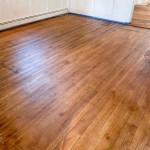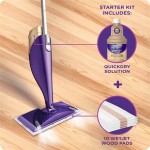Chair Pads for Wood Floors: Protection and Comfort
Wood floors offer a timeless elegance and durability, making them a popular choice for residential and commercial spaces. However, the constant movement of chairs can lead to scratches, dents, and wear on these surfaces, diminishing their aesthetic appeal and potentially reducing their lifespan. Employing chair pads designed specifically for wood floors is a proactive step towards safeguarding this investment. These pads act as a barrier between the chair legs and the floor, mitigating the direct impact and friction that cause damage.
The market offers a diverse range of chair pads, each with its own set of materials, designs, and functionalities. Choosing the appropriate option depends on factors such as the type of chair, the frequency of use, the type of wood floor finish, and the desired aesthetic. Properly selected and installed chair pads can significantly extend the life of wood floors while also enhancing the comfort and usability of chairs.
Understanding the Risks of Not Using Chair Pads
Without adequate protection, the repeated movement of chairs across wood floors poses several risks. One primary concern is scratching. Even seemingly minor movements can create hairline scratches over time, especially if the chair legs have imperfections or accumulate small particles of dirt or debris. These scratches can dull the finish of the floor and make it appear worn.
Another significant risk is denting. Heavier chairs, or those used by individuals with larger builds, can exert significant pressure on the floor, leading to dents, especially in softer wood species. High heels or small, hard objects trapped underneath the chair legs can exacerbate this issue, creating concentrated points of pressure that can permanently damage the floor. Furthermore, constant friction from chair legs can wear away the floor's finish, leaving it vulnerable to stains, moisture damage, and further deterioration. This wear can also create uneven surfaces, posing tripping hazards.
Beyond physical damage, the constant scraping of chairs can also create unwanted noise. This noise can be disruptive in quiet environments like offices or libraries, and can even be a nuisance in residential settings. Addressing these risks proactively through the use of chair pads is a prudent approach to maintaining the integrity and longevity of wood floors.
Different Types of Chair Pads and Their Features
The market offers a variety of chair pad options, each designed with specific features and materials suitable for different needs. One common type is felt pads. These pads are typically made from wool or synthetic felt and are available in various thicknesses, shapes, and sizes. Felt pads are effective at preventing scratches and are relatively inexpensive. However, they can wear down over time and may need to be replaced periodically. Adhesive-backed felt pads are easy to install but may leave residue when removed. Nail-on or screw-on felt pads offer a more secure attachment but require additional tools and effort for installation.
Rubber pads are another popular choice. These pads provide excellent grip and prevent chairs from slipping or sliding, especially on smooth surfaces. Rubber pads are also durable and resistant to wear and tear. However, some rubber pads may leave marks or stains on certain types of wood floors, so it's important to choose a non-marking variety. Silicone pads offer similar benefits to rubber pads but are often more resistant to staining and discoloration. They are also typically more transparent, making them less noticeable.
Plastic pads, particularly those made from Teflon (PTFE), are designed to minimize friction and allow chairs to glide smoothly across the floor. These pads are ideal for heavy chairs or chairs that are frequently moved. However, they may not provide as much cushioning as felt or rubber pads and may not be suitable for floors that are prone to scratching. In addition to these common types, there are also specialized chair pads made from materials like cork, leather, or even metal. Cork pads offer natural cushioning and are eco-friendly. Leather pads add a touch of elegance and can complement certain types of furniture. Metal pads, typically used in conjunction with other materials, offer exceptional durability and stability.
Selecting the Right Chair Pads for Your Needs
Choosing the appropriate chair pads requires careful consideration of several factors. The type of wood floor is a crucial consideration. Softer woods, such as pine or fir, are more susceptible to denting and scratching and may require thicker, more cushioned pads. Harder woods, such as oak or maple, are more resilient but can still benefit from protection against scratches. The finish of the floor also plays a role. Some finishes are more susceptible to staining or discoloration from certain types of pads, so it's important to choose pads that are compatible with the finish.
The type of chair is another important factor. Heavy chairs or those used in high-traffic areas will require more durable and robust pads. Chairs with narrow legs may benefit from pads that are specifically designed to fit these legs. The shape and size of the chair legs should also be considered when selecting pads. Round pads are typically used for round legs, while square pads are used for square legs. The size of the pad should be slightly larger than the leg to provide adequate coverage and protection.
Considerations of aesthetics are important for many homeowners and business owners. While functionality is paramount, the appearance of the chair pads should also complement the furniture and the overall décor of the room. Transparent or low-profile pads are often a good choice for those who want to minimize the visibility of the pads. Finally, ease of installation and maintenance should also be considered. Adhesive-backed pads are easy to install but may need to be replaced more frequently. Nail-on or screw-on pads offer a more secure attachment but require more effort for installation. Regular cleaning of the pads can help to prevent the accumulation of dirt and debris, which can scratch the floor.
Regular inspection of chair pads is crucial for maintaining their effectiveness. Check the pads periodically for wear and tear, such as flattening, tearing, or detachment. Replace worn-out pads promptly to prevent damage to the floor. Consider using furniture glides in addition to chair pads, especially for chairs that are frequently moved across the floor. Furniture glides are designed to distribute the weight of the chair evenly and reduce friction, further minimizing the risk of damage. By carefully selecting and maintaining chair pads, property owners can effectively protect their wood floors from damage and extend their lifespan, while also enhancing the comfort and usability of their chairs.

24 Pcs Chair Leg Floor Protectors For Hardwood Floors Felt Furniture Pads Table Caps Covers Bar Stool

Gicunk 24 Pcs Chair Leg Floor Protectors For Hardwood Floors Felt Furniture Pads Table Caps Covers Bar Stool

Scotch 3 In Brown Round Surface Protection Felt Floor Pads 4 Pack Sp828 Na The Home

Karl Home Office Chair Mat For Hard Floor Rolling Chairs Desk 906148573744

X Protector 235 Pcs Ideal Felt Furniture Pads Brown And Black

Classic Braided Chair Pad Pads Plow Hearth Black

Prdigy 10 Sheets Non Slip Furniture Pads Grippers Chair Leg Self Adhesive Feet Anti Scratches For Tiled Wood

How To Protect Floors With Felt Pads Glides And Grippers A Home Improvement Woodworking Tip

Scotch 32 Pack 1 In Beige Round Felt Furniture Pads Sp802 Na At Com

48 Brown Premium Felt Furniture Pads X Protector Chair Felts For Feet Wood Floors Floor Best







